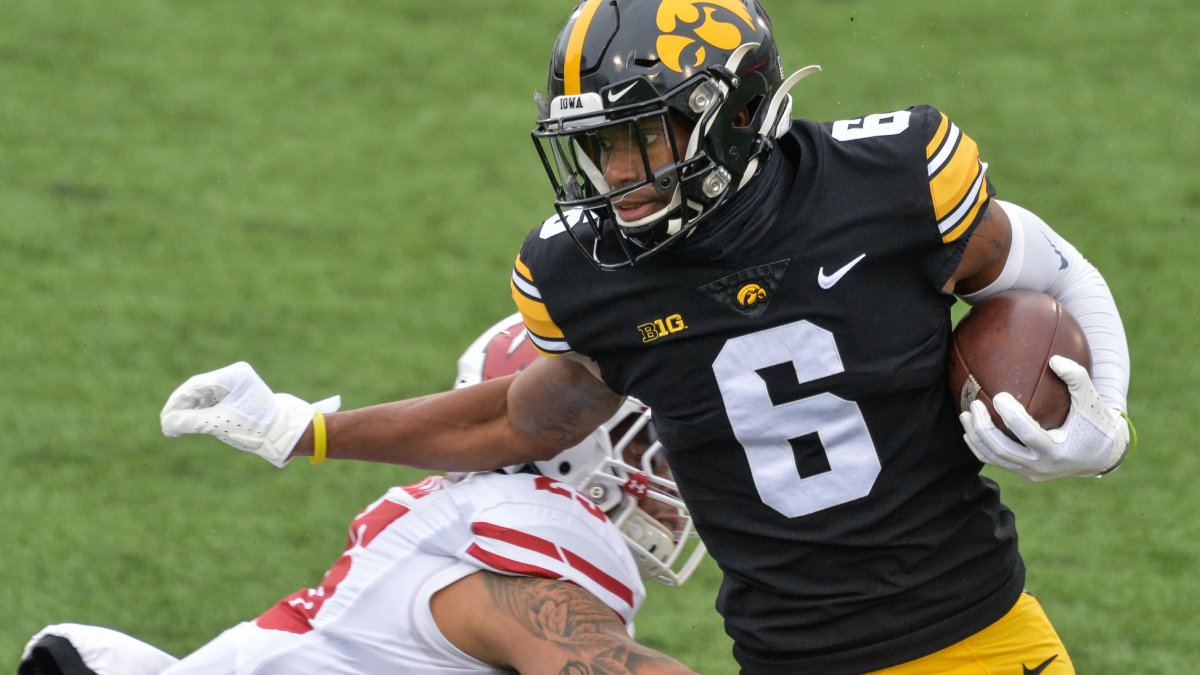Comparing current NFL draft prospects to those of years past is standard procedure in draft evaluation, though most comparisons are built on the memory recall and subjective opinion of the particular evaluator.
This is part of a series of articles comparing the 2021 draft prospects to prior years and picking out the most similar comps with a clearly delineated and quantifiable method. This series specifically looks at running backs and wide receivers ranked in our top-200 prospects.
PFF data scientist Eric Eager has done tremendous work building college-to-pro projections, which are built off the robust college data we’ve collected since 2014 and have been applied to exercises like building an “Analytics” Mock. In this analysis, I’m going to use some of our advanced stats for comparison but primarily rely on traditional stats to go back further to compare the 2021 prospects to draft classes going back to 2006.
Without the NFL Scouting Combine this season, the important measurables like weight and 40-yard dash will be reported through the various pro days that will be taking place over the next few weeks.
METHODOLOGY
The comps below were derived from a two-step process. First, I converted all the most statistically relevant stats and measurables to percentiles based on the thousands of prospects who have entered the NFL since 2006 at each position. Then, I filtered the total universe of past prospects by those who had draft positions, height, weight and 40 times within a 10th percentile in either direction of Ihmir Smith-Marsette. For undrafted players, I assigned a numerical draft position of 300.
The rest of the matching features were transformed by principal component analysis (PCA). I found the closest statistically comparable players by the euclidean distance between the players' principal components, listed in the top 10 below.
The metrics for PCA are: career market shares for receiving yards and receiving touchdowns, best-season market shares for receiving yards and touchdowns, yards per route run, and yards per reception.
For Smith-Marsette’s draft position, I’m using an estimate based on the mock data collected at GrindingTheMocks.com. For weight and 40 time, I’m using the numbers from Smith-Marsette’s pro day, with a 0.03-second penalty added to the 40 time to reflect the uncertainty of pro-day timed measurements.
Most comparable players
Smith-Marsette put on a show at the Iowa pro day, running the 40-yard dash in 4.43 seconds, hitting 37 inches in the vertical, 10-foot-4 in the broad and coming in at an even 7.0 seconds for the three-cone drill. Athleticism is less important for projecting wide receiver success, but it can have a major impact on draft position. Smith-Marsette could see his draft stock rise following these results.
Smith-Marsette wasn’t the most productive receiver in college, but the Iowa offense wasn’t strong overall, and his market share numbers look better than the raw totals. Smith-Marsette is also a relatively young prospect for a senior, which means he played at a very young age as a true freshman and sophomore, which hurt his career market share numbers.

It’s not all bad for Smith-Marsette’s comps, but not great, either. Darius Slayton and Kenny Stills have been positive surprises as later-round picks, while Denarius Moore had a strong rookie year and then a couple more good seasons before fading away.
Exclusive content for premium subscribers

WANT TO KEEP READING?
Dominate Fantasy Football & Betting with AI-Powered Data & Tools Trusted By All 32 Teams
Already have a subscription? Log in



 © 2025 PFF - all rights reserved.
© 2025 PFF - all rights reserved.